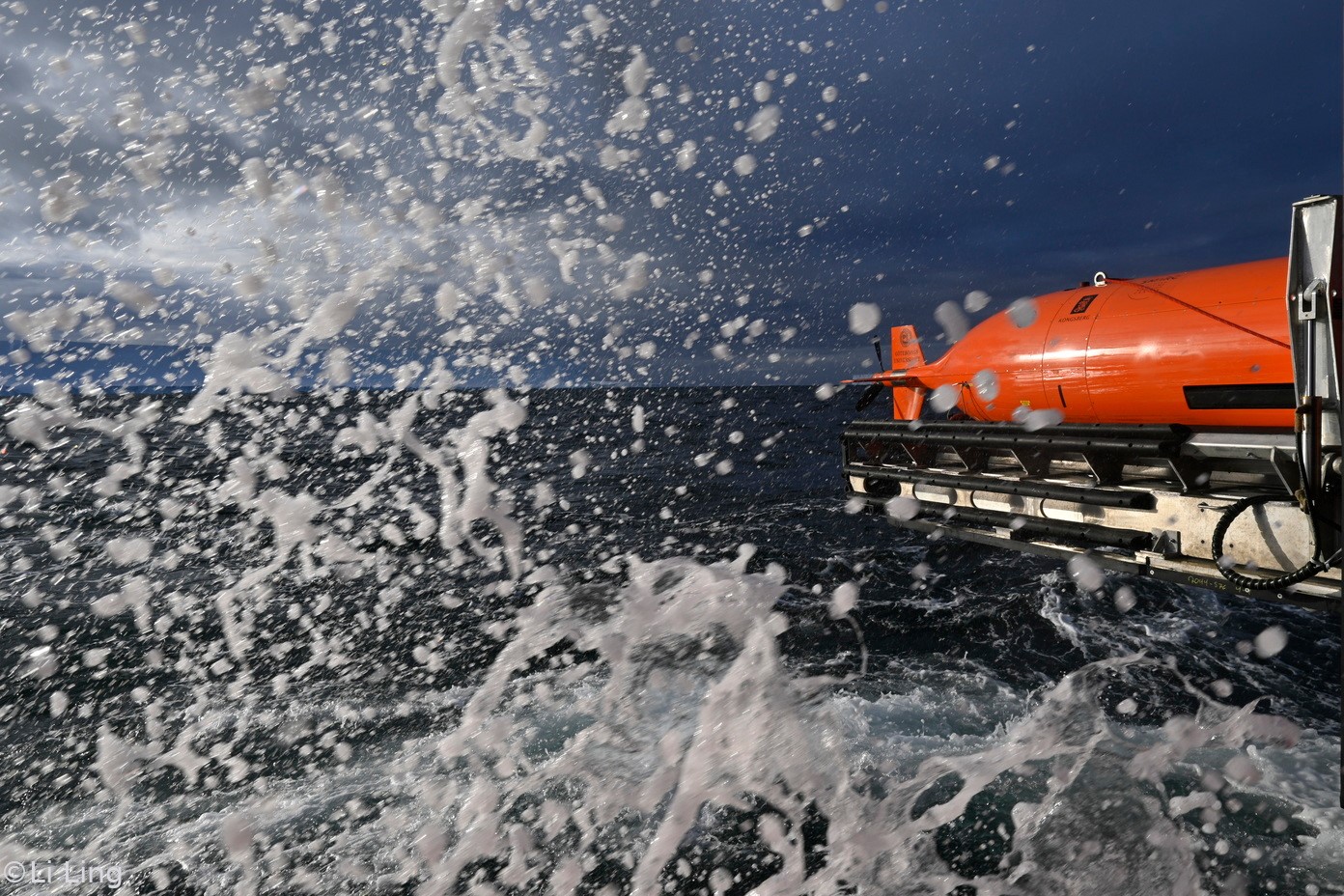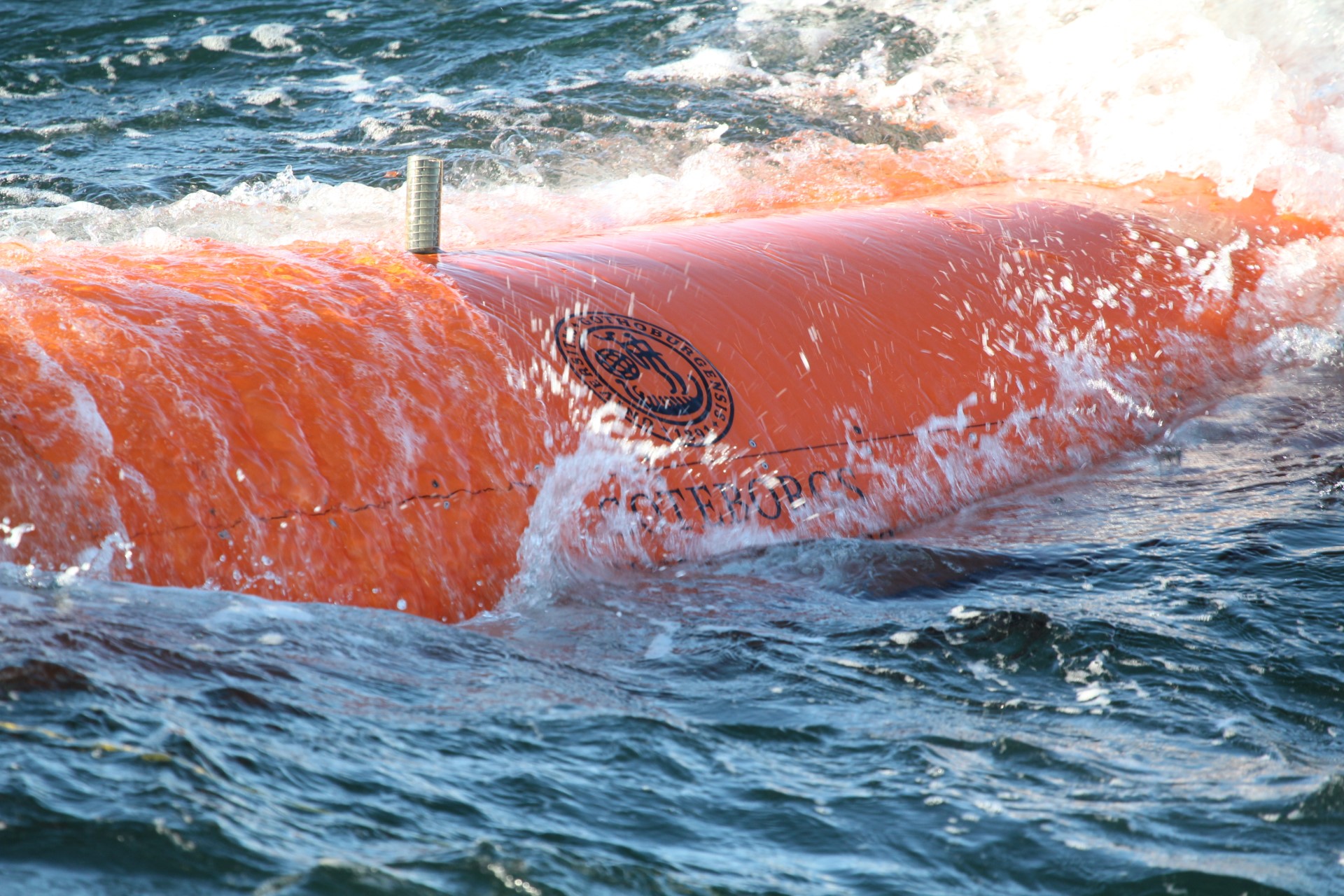Ran, the seven metre-long, bright orange, autonomous underwater vehicle (AUV) and a highly valued component of the International Thwaites Glacier Collaboration (ITGC), has gone missing in action in West Antarctica. The AUV has contributed key data to ITGC, including the first data from under Thwaites ice shelf1 and high resolution maps that show where Thwaites Glacier was grounded in the past2. Ran disappeared the first weekend of February during an expedition to Thwaites Glacier with the South Korean icebreaker RV/IB Araon. On the last planned mission of the cruise, it failed to re-surface at the meeting point and searches with acoustic instrumentation, helicopter, and drones were fruitless.
“We have had to give up. Ran is very likely still deep under Dotson Ice Shelf, the target for the last mission”, says professor Anna Wåhlin, who is project leader on board the Araon and a key collaborator on ITGC at the University of Gothenburg in Sweden.
Ran’s modern technology and sensors measured and documented the surroundings in the water, including a unique capacity to get high resolution maps of the ice base. It carried out long missions under ice, and was used successfully in Antarctica, Greenland, New Zealand and many other locations.
During dives under the 200–500 m thick ice, Ran did not have continuous contact with the research vessel. Routes are programmed in advance and thanks to an advanced navigation system, Ran can find its way back to open water. Ice shelf cavities are often completely unknown, and missions are built up in several stages, starting near the bottom and outside the ice while gathering information needed to go survey the ice underside.
Anna Wahlin continues: “The valuable data we received from Ran and other underwater vehicles are very rare, and part of the reason is the risk involved in getting them. Our aim is to replace Ran. We plan to explore ways to obtain funding to bridge the gap between the amount insurers will pay as the residual value of Ran and the cost of a replacement AUV at today’s prices."
1 A. K. Wåhlin, A. Graham, K. A. Hogan, B. Y. Queste, L. Boehme, R. Larter, E. Pettit, J. Wellner and K. J. Heywood, 2021. Pathways and modification of warm water flowing beneath Thwaites ice shelf, West Antarctica. Science Advances, 7 (15), eabd7254. DOI:10.1126/sciadv.abd7254.
2 A. G. C. Graham, A. Wåhlin, K. A. Hogan, F. O. Nitsche, K. J. Heywood, R. L. Totten, J. A. Smith, C.-D. Hillenbrand, L. M. Simkins, J. B. Anderson, J. S. Wellner and R. D. Larter, 2022. Rapid retreat of Thwaites Glacier in the pre-satellite era. Nature Geoscience, 15, 706-713. DOI:10.1038/s41561-022-01019-9.








